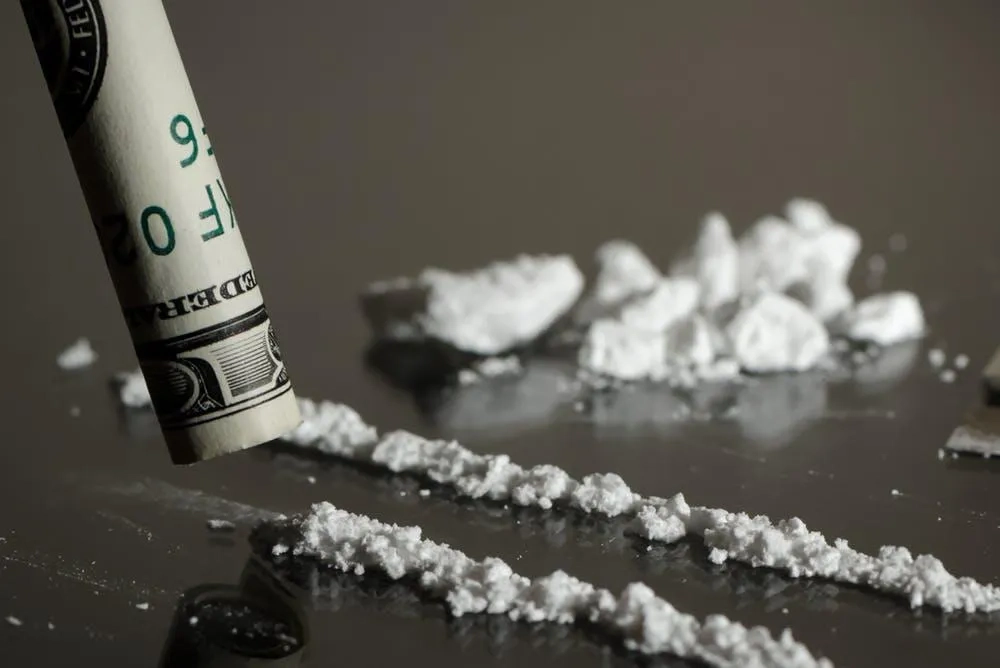In today’s fast-paced society, addiction has become an all-too-common challenge for millions of Americans. From substance abuse to behavioral addictions, our nation faces a growing epidemic that impacts both individuals and communities.
In this in-depth guide, we’ll explore the most common addictions in the US, shedding light on the prevalence, causes, and consequences of these compulsive behaviors. By understanding the widespread nature of addiction across the country, we can work toward better prevention, awareness, and treatment strategies. So, let’s dive into the world of addiction and discover the common threads that connect these seemingly disparate experiences.
What is the most common kind of addiction?
Most common addictions, including alcohol, drugs, gambling, and sex, and provides information on the prevalence, symptoms, and treatment options for each addiction.
Alcohol

Alcohol is the most commonly abused substance in the United States, with 10.2% of people aged 12 or older struggling with an alcohol use disorder (AUD). Despite its legal status and social acceptance, alcohol abuse can lead to addiction and numerous negative consequences, including liver disease, alcohol overdose, and drunk driving fatalities. In 2021, alcohol-related deaths rose nearly 34% to over 52,000.
Effects of Alcohol
Alcohol consumption can interfere with the communication pathways of the brain, making it challenging for the brain to regulate functions such as memory, judgment, balance, and speech. Individuals struggling with alcohol addiction or Alcohol Use Disorder (AUD) are more susceptible to drinking excessive amounts of alcohol, increasing their risk of negative health effects and serious injury.
Alcohol Abuse and Risks
Alcohol abuse can have significant negative consequences on both safety and health. For instance, in 2019, 10,142 deaths (28% of overall driving fatalities) were caused by alcohol-impaired driving, according to the National Institute on Alcohol Abuse and Alcoholism (NIAAA).
It’s essential to distinguish between alcohol abuse and alcoholism. The long-term health risks of alcohol abuse include liver disease, heart disease, depression, stroke, stomach bleeding, head and neck cancers, diabetes, high blood pressure, and sleep disorders.

Nicotine
Nicotine addiction may not seem as harmful as other addictions, but tobacco use is the leading cause of preventable death, accounting for nearly 480,000 deaths each year. While the rate of nicotine addiction has decreased in recent years, the popularity of nicotine vaping devices has caused an uptick in usage among young adults. Many smokers struggle to quit, indicating addiction and a need for treatment.
Effects of Nicotine
However, repeated exposure to nicotine can lead to tolerance and dependence, making it difficult to quit using tobacco products or e-cigarettes. Nicotine addiction can have serious health consequences, including an increased risk of cancer, heart disease, and respiratory problems. It is important to seek support and professional help in quitting nicotine use.
Nicotine Abuse and Risks
Nicotine use has been linked to a range of serious health problems, including an increased risk of stroke, heart disease, and cancer. It can also cause respiratory problems, such as coughing fits and shortness of breath, as well as dental problems and reduced immune function. In addition, nicotine use during pregnancy can increase the risk of congenital disabilities and ectopic pregnancy. Male sexual dysfunction and rheumatoid arthritis are also potential long-term health risks of nicotine use.
Related: Am I Addicted to Porn? 6 Symptoms of Porn Addiction

Marijuana
Marijuana use disorder affects 5.1% of Americans aged 12 or older. Despite the legalization of marijuana in some states, its addictive potential should not be overlooked, especially with increasing potency. Nearly 18% of people aged 12 or older reported using marijuana in the last year, and usage rates among adolescents are concerning, with 30.5% of 12th graders reporting use within the last year.
Also read: CBD Vape Pen: Elevate Your Vaping Game
Effects of Marijuana
THC, the primary psychoactive compound in marijuana, triggers specific receptors in the brain, causing a sensation of euphoria or “high”. High doses of THC may cause users to experience altered senses, impaired thinking and problem-solving abilities, and hallucinations. However, in certain medicinal use cases, these symptoms can be beneficial for treating certain health conditions when THC is prescribed by a doctor and used as directed.
Marijuana Abuse and Risks
While marijuana has clear medical applications, recreational abuse of the drug can pose certain risks. Marijuana is typically consumed via inhalation (smoking or vaping) or ingestion (edibles or tinctures), both of which carry potential risks.
Long-term smoking of marijuana can lead to breathing problems, increased heart rate, and intense nausea and vomiting. Additionally, long-term marijuana abuse, in general, can result in memory impairment, temporary hallucinations, temporary paranoia, and may worsen symptoms in patients with schizophrenia. Pregnant women who use marijuana may also be at a higher risk of congenital disabilities or stillbirth. In rare cases, frequent marijuana use may lead to Cannabinoid Hyperemesis Syndrome (CHS), which is characterized by recurrent episodes of severe nausea, vomiting, and dehydration. It is important to use marijuana responsibly and to seek professional help and support if needed.
Also Read: Am I Addicted to Porn? 6 Symptoms of Porn Addiction

Opioid
Opioid addiction affects 1.1% of Americans aged 12 or older but remains a significant public health crisis due to the high number of opioid-related deaths. Prescription painkillers like Codeine, Vicodin, and OxyContin are commonly abused and can lead to addiction, even with seemingly harmless levels of use. Opioid addiction can develop from prescription use or abuse without a prescription.
Effects of opioid painkillers
Opioids work by binding to and activating opioid receptors in the brain, spinal cord, and other organs, blocking pain signals and releasing large amounts of dopamine, which can create a pleasurable feeling that can lead to addiction and opioid use disorder (OUD).
Unfortunately, opioid addiction has become a significant problem in the United States. Research shows that millions of people began nonmedical use of pain relievers in the early 2000s, and by 2017, a national emergency was declared for opioid overdose. Opioids were involved in nearly 75% of all drug overdose deaths in 2020.
Risks of opioid painkillers
Long-term use of opioids can result in constipation, nausea, vomiting, dry mouth, dizziness, confusion, sexual dysfunction, slowed breathing, and depression. Opioid withdrawal symptoms can also be severe and include anxiety, insomnia, muscle aches, and sweating. In some cases, opioid abuse can lead to hypoxia, which occurs when too little oxygen reaches the brain, resulting in brain damage or other serious health problems. It is important to seek professional help and support to overcome opioid addiction and reduce the risk of associated health problems.
Inhalant
Inhalant addiction affects around 0.9% of Americans aged 12 or older. Inhalant addiction is dangerous because inhalants are volatile toxic substances that can cause immediate consequences, including hospitalization or death. Chemicals in inhalants can linger in the body and brain, making recovery more challenging.
What are Inhalants?
Inhalants refer to any solvents, aerosols, gases, or nitrites individuals will inhale to get high. It’s called different names depending on the substance and equipment used, but standard terms include “sniffing,” “bagging,” and “huffing.”. For example, “huffing” usually describes breathing from an inhalant-soaked rag stuffed in the mouth or inhaling from balloons filled with nitrous oxide.
Common inhalants include:
- Paint thinners
- Gasoline
- Glue or markers
- Hair or deodorant sprays
- Vegetable oil sprays
- Whipped cream aerosols or dispensers (also called whippets)
- Chloroform
- Nitrous oxide
- Room odorizer

Cocaine
Cocaine addiction affects around 0.5% of Americans aged 12 or older, with rates dropping slowly over time. However, Crack Cocaine remains a significant threat to public health, leading to many addictions and ruined lives. Nearly 2% of people aged 12 or older reported using Cocaine in the last month, and usage rates among adolescents are concerning.
Effects of Cocaine
Cocaine is a highly addictive stimulant drug that increases dopamine levels in the brain’s pleasure and reward centers. The drug takes effect quickly and typically lasts from a few minutes to an hour, depending on the method of use.
Users often report feelings of extreme happiness, energy, mental alertness, increased sensitivity, irritability, and paranoia during the high. With continued cocaine use, the brain can adapt to the flood of dopamine, resulting in less sensitivity to the drug and an increased need for higher doses to achieve the desired effects.
Risk Of Cocaine
Long-term cocaine use can lead to a range of negative health effects, including changes in brain structure and function, cardiovascular problems, respiratory issues, gastrointestinal problems, and neurological damage. Additionally, cocaine use can increase the risk of stroke, heart attack, and other serious health problems.
Cocaine Abuse and Risks
Due to its short-lived high and the brain’s quick dependence on its effects, cocaine can be highly addictive. Combining cocaine with other substances, such as amphetamines or fentanyl, can also increase the risk of accidental overdose, especially if users are unaware of the other substances present.
The long-term health risks of cocaine abuse include:
- Constricted blood vessels
- Nausea
- Raised body temperature and blood pressure
- Fast or irregular heartbeat
- Tremors and muscle twitches
The long-term health risks associated with each method of use:
- Snorting: loss of smell, nosebleeds, frequent runny nose, and problems with swallowing
- Smoking: cough, asthma, respiratory distress, and higher risk of infections like pneumonia
- Consuming by mouth: severe bowel decay from reduced blood flow
- Needle injection: higher risk for contracting HIV, hepatitis C, and other bloodborne diseases, skin or soft tissue infections, as well as scarring or collapsed veins
Also Read: 5 Tips to Break Free From Porn Addiction
Heroin
Heroin addiction affects around 0.3% of Americans aged 12 or older, with growing use, particularly among young women. The presence of other illicit drugs like Fentanyl, which is often laced with Heroin, has contributed to the growing number of overdose deaths. Heroin addiction is difficult to overcome due to severe withdrawal symptoms, and treatment typically requires a combination of therapy and medication. Heroin use also increases the risk of contracting and spreading diseases like HIV and AIDS through needle sharing. Inpatient rehab is the best option for successful recovery.
Heroin Effects
Heroin binds to and activates mu-opioid receptors (MORs) in the brain, which stimulates the release of dopamine in the brain’s reward center, causing a surge of pleasurable sensations. The resulting high can be highly addictive, and the brain can quickly become dependent on the substance, leading to larger doses being required to achieve the same effects.
Heroin Abuse and Risks
Repeated heroin use can cause physical changes to the brain’s structure and physiology that are difficult to reverse. Heroin abuse can affect decision-making abilities, the ability to regulate behavior, and responses to stressful situations due to the deterioration of the brain’s white matter.
Withdrawal symptoms from heroin can occur within hours after the last use and may include restlessness, muscle and bone pain, insomnia, diarrhea, vomiting, and cold flashes. Injecting heroin also comes with risks such as HIV/AIDS, Hepatitis B and C, and other infectious agents due to sharing needles or fluids.
Long-term heroin abuse can lead to various health risks, including insomnia, constipation, and cramping, collapsed veins (when injecting the drug), damaged tissue inside the nose (when snorting the drug), infections of the heart lining and valves, abscesses (swollen tissue filled with pus), liver and kidney disease, lung complications (including pneumonia), sexual dysfunction for men, hypoxia, and coma.
Stimulant
Stimulant addiction affects 0.2% of Americans aged 12 or older, with high addiction potential and severe withdrawal symptoms. Prescription stimulants like Adderall and Ritalin are commonly abused, with 2.1% of US adults misusing their prescription in 2020.
Stimulants are a class of drugs that increase activity in the central nervous system, resulting in increased energy, alertness, and focus. They work by increasing the levels of dopamine, norepinephrine, and serotonin in the brain, which are neurotransmitters that regulate mood, motivation, and reward.
Common types of stimulants include amphetamines, cocaine, and methylphenidate (used to treat ADHD). Stimulants are often abused for their ability to produce a euphoric high, but repeated use can lead to addiction, tolerance, and withdrawal.
Long-term stimulant abuse can cause a range of health problems, including heart problems, high blood pressure, anxiety, paranoia, aggression, and psychosis.
Methamphetamine Abuse and Risks

Studies have found that continued methamphetamine use can cause changes in the brain that lead to reduced coordination and impaired verbal learning. Meth abuse also increases the risk of HIV/AIDS and Hepatitis due to needle sharing and risky behavior, and can worsen existing HIV/AIDS symptoms.
Long-term meth abuse can lead to severe health problems, including extreme weight loss, severe dental problems and tooth loss, nerve damage, liver damage, increased risk of contracting HIV/AIDS and Hepatitis, memory loss, hallucinations, paranoia, and psychosis, stroke, and even death.
Benzodiazepine
Benzodiazepine addiction affects 0.2% of Americans, with nearly 5 million people misusing them in 2020. These drugs, used to manage anxiety and stress, are highly addictive, and withdrawals can be deadly without medical assistance during detox.
Effects of Benzodiazepines
Benzodiazepines increase the activity of the GABA neurotransmitter in the brain, which inhibits brain activity and produces calming effects, drowsiness, and euphoria. While benzodiazepines are considered safe when taken as prescribed, their sedative effects can lead to abuse and addiction.
Benzodiazepine Abuse and Risks
Long-term benzodiazepine abuse can lead to various health risks, including an increased risk of seizures if the user abruptly stops using the drug. Therefore, it is essential to taper off benzos under medical supervision to avoid dangerous side effects.
Mixing benzodiazepines with other depressants, such as alcohol or opiates, can increase the risk of coma or death.
Other long-term health risks of benzodiazepine abuse may include mania, psychosis, anxiety, sleep disorders, difficulty breathing, muscle spasms, seizures, and coma.

Barbiturate
Barbiturate addiction affects 0.2% of Americans aged 12 or older, with millions of people prescribed these drugs to treat tension and sleep disorders. Prescription users can build tolerance and addiction to drugs like Lunesta and Ambien, leading to continued abuse. Sleeping pills can produce mind-altering effects that contribute to addiction.
Effects of Barbiturates
Barbiturates inhibit the activity of the GABA neurotransmitter, causing drowsiness, sedation, and euphoria. However, the margin for error in dosage makes them risky, as even a slightly high dose can lead to intoxication or overdose. Therefore, they can be dangerous if not used with caution.
Barbiturates Abuse and Risks
Barbiturates, also known as “downers,” may be used to counteract the effects of stimulant drugs like cocaine and meth. However, younger people may be unaware of the risks associated with abusing them. Withdrawal symptoms from barbiturates can be life-threatening, so great care should be taken when tapering off these drugs.
Long-term barbiturate abuse can lead to various health risks, including trouble breathing, slowed heart rate, confusion, and paranoia, nausea and vomiting, suicidal thoughts, coma, and death.
Common signs of addiction can include cravings for the drug, withdrawal from activities abuse drugs, financial issues, unkempt appearance, and extreme changes in weight, mood, or personality.